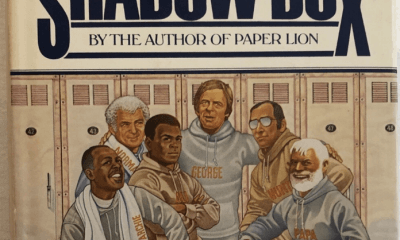Featured Articles
Emile Griffith (1938-2013)
 Emile Griffith was a terrific fighter.
Emile Griffith was a terrific fighter.
Griffith fought in an era when there was one recognized champion in each weight division. He won his first world title at 147 pounds with a thirteenth-round knockout of Benny “Kid” Paret in 1961. Five years later, having moved up to 160, he decisioned Dick Tiger to claim the middleweight throne.
How formidable was Tiger? After losing to Griffith, he defeated Jose Torres in his next bout to claim the light-heavyweight crown.
Emile was always willing to go in tough. He’d fight anyone. During the course of his career, he beat Paret twice, Tiger twice, Nino Benvenuti, Benny Briscoe, Gypsey Joe Harris, and Luis Rodriguez (three times).
For years, he was a fixture at Madison Square Garden, where he fought twenty-eight times. His career spanned almost two decades (from June 2, 1958, to July 30, 1977). In 111 fights, he was knocked out twice. All told, he boxed 1,122 rounds in his pro career. By contrast, Sugar Ray Leonard tallied 306; Thomas Hearns, 380.
“Griffith boxed in an era when they fought often and championship fights were fifteen rounds,” Bernard Hopkins said hours after Emile’s death. “We don’t know in our generation if we could have handled that type of heat.”
Griffith is best remembered today for his March 24, 1962, fight against Benny Paret. After beating Paret for the title, he’d lost a split-decision in a rematch six months later.
Griffith-Paret III was contested at Madison Square Garden. At the weigh-in prior to the bout, Paret made crude sexual remarks and taunted Griffith about his sexuality. Emile was presumed to be gay at a time when the stigma that attached to homosexuality was ugly and overwhelming. That night, Griffith pinned Paret in a corner and battered him into submission. The beaten fighter lapsed into a coma and died ten days later. It was the first ring death to be witnessed live in the United States on national television.
“I was never the same fighter after that,” Emile later acknowledged. “After that fight, I did enough to win. I would use my jab all the time. I never wanted to hurt the other guy. I would have quit, but I didn't know how to do anything else but fight.”
For the rest of his life, Griffith would dance around the issue of his sexual orientation. He had come of age before Stonewall lit the flame that kindled the gay rights movement.
“I’ve chased men and women,” Emile would tell writer Gary Smith in what was as close to a public acknowledgement of his sexuality as he ever came. “I like men and women both. But I don't like that word: homosexual, gay, or faggot. I don't know what I am. I love men and women the same.”
In 1992, as Griffith was leaving Hombre (a gay bar near the Port Authority Bus Terminal in New York), he was attacked by a gang of thugs and viciously beaten. During the two-month hospitalization that followed, he suffered kidney failure, severe infections, and memory lapses. After his release, dementia set in.
The decline in Emile’s quality of life was painful to all who knew him. Outside the ring, there had always been a childlike quality about him. He was playful and gentle with a lyrical lilting voice and warm smile that lit up his face.
He was a joy to work with,” former Madison Square Garden Boxing president Bobby Goodman recalled upon hearing of Emile’s death. “Whether you were a matchmaker, a promoter, a publicist, a writer; he was friendly to everyone. You couldn’t find a nicer guy.”
“I knew him since 1960,” trainer Don Turner said. “That’s fifty-three years. He was a great fighter and he was always nice to me. It’s sad that he’s gone.”
On a personal note; I met Griffith at the Times Square Gym in 1983. I had just begun researching The Black Lights, which was my initial foray into boxing writing. Emile was training fighters there. We talked at length. He was generous with his time and knowledge.
Thereafter, a ritual greeting developed between us. Whenever I saw Emile, my jaw would drop. Then I’d point in his direction and blurt out, “Sugar Ray Robinson!”
Emile would laugh and hug me. We must have done it fifty times.
Several years ago, I saw Emile at a club-fight card in New York. My jaw dropped. I pointed in his direction and blurted out “Sugar Ray Robinson!”
A look of consternation crossed Emile’s face.
“No, no, no!” he cried out. “Emile Griffith.”
The tragic end game had begun.
Thomas Hauser can be reached by email at thauser@rcn.com. His most recent book ( Thomas Hauser on Sports: Remembering the Journey) was published by the University of Arkansas Press earlier this year.
-

 Featured Articles3 weeks ago
Featured Articles3 weeks agoAvila Perspective, Chap. 330: Matchroom in New York plus the Latest on Canelo-Crawford
-

 Featured Articles2 weeks ago
Featured Articles2 weeks agoVito Mielnicki Jr Whitewashes Kamil Gardzielik Before the Home Folks in Newark
-

 Featured Articles4 weeks ago
Featured Articles4 weeks agoAvila Perspective, Chap 329: Pacquiao is Back, Fabio in England and More
-

 Featured Articles3 weeks ago
Featured Articles3 weeks agoOpetaia and Nakatani Crush Overmatched Foes, Capping Off a Wild Boxing Weekend
-

 Featured Articles2 weeks ago
Featured Articles2 weeks agoCatching Up with Clay Moyle Who Talks About His Massive Collection of Boxing Books
-

 Featured Articles4 weeks ago
Featured Articles4 weeks agoFabio Wardley Comes from Behind to KO Justis Huni
-

 Featured Articles1 week ago
Featured Articles1 week agoMore Medals for Hawaii’s Patricio Family at the USA Boxing Summer Festival
-

 Featured Articles4 weeks ago
Featured Articles4 weeks agoDelving into ‘Hoopla’ with Notes on Books by George Plimpton and Joyce Carol Oates















